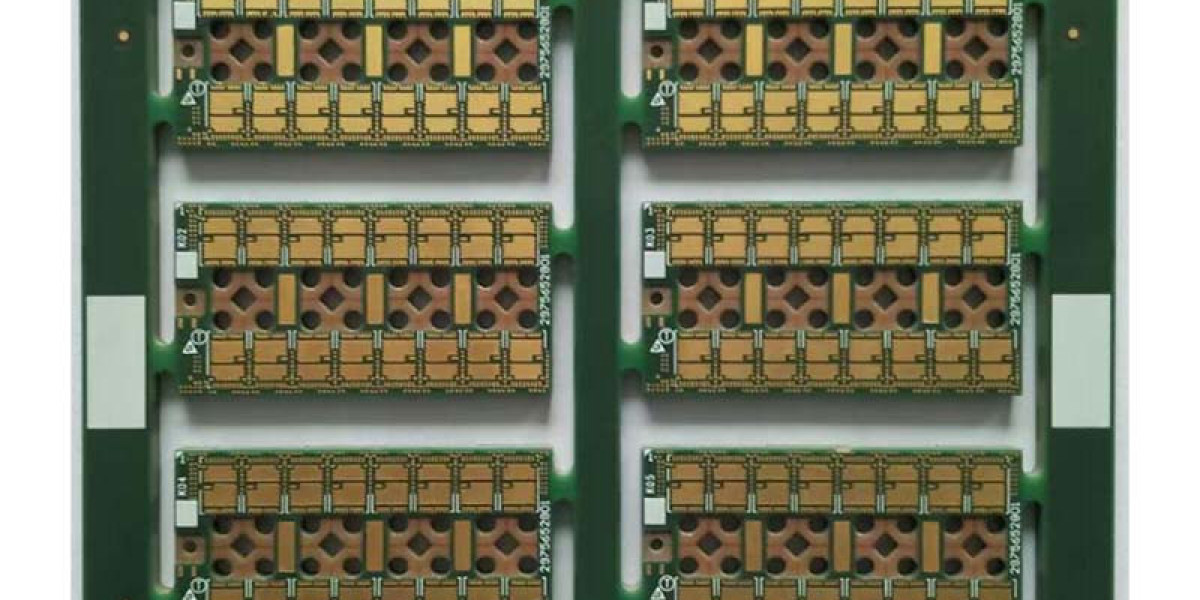As electronic devices continue to evolve, the need for durable, high-performance circuit boards has never been greater. One such innovation that has gained significant traction is Heavy Copper PCBs. Unlike standard PCBs, which typically have copper thicknesses of less than 3 oz/ft², Heavy Copper PCBs feature copper layers ranging from 3 oz/ft² to more than 20 oz/ft², making them ideal for high-power applications that demand exceptional electrical conductivity, thermal dissipation, and mechanical strength.
From electric vehicles (EVs) to renewable energy systems, industrial automation, and aerospace applications, Heavy Copper PCBs are playing a crucial role in the advancement of technology. In this article, we will explore the unique properties of Heavy Copper PCBs, their advantages, manufacturing techniques, and emerging applications.
Why Heavy Copper PCBs?
High Current-Carrying Capacity
Electrical conductivity is a key concern for power electronics, and Heavy Copper PCBs significantly outperform traditional PCBs in this regard. With thick copper traces, these PCBs can carry higher currents without excessive heat generation or voltage drops. This feature is critical in applications such as power distribution networks, electric vehicle charging stations, and industrial motor controllers, where efficient current transmission is essential.
For example, in EV powertrains, Heavy Copper PCBs help regulate the power between batteries and motors, ensuring efficient energy transfer while reducing resistive losses. This improves battery performance and extends vehicle range, making it a crucial component in next-generation electric mobility solutions.
Enhanced Thermal Management
With the increasing power density of modern electronic devices, managing heat dissipation is more important than ever. Heavy Copper PCBs offer built-in thermal solutions, effectively dispersing heat without requiring additional cooling mechanisms like heat sinks or fans.
For instance, high-power LED systems, such as those used in industrial lighting or automotive headlights, generate significant amounts of heat. Heavy Copper PCBs ensure even heat distribution, preventing thermal runaway and extending the lifespan of LEDs.
Increased Mechanical Strength and Reliability
Heavy Copper PCBs are more robust than standard PCBs, making them ideal for harsh environments and mechanically demanding applications. Their thick copper layers provide additional mechanical support, reducing the risk of PCB warping, cracking, or delamination, even under extreme temperature fluctuations.
In military and aerospace applications, where electronic systems are exposed to vibration, shock, and extreme temperature variations, Heavy Copper PCBs provide unmatched durability, ensuring that mission-critical systems function reliably in the toughest conditions.
How Heavy Copper PCBs Are Manufactured
- Advanced Copper Plating Techniques
Heavy Copper PCBs are typically manufactured using advanced copper plating techniques, such as step plating and differential etching. These methods allow for precise control over copper thickness while maintaining high resolution for fine-pitch circuits.
One of the most common processes is electroplating, where copper is deposited onto the PCB substrate in layers. This technique ensures uniform thickness, enhancing conductivity and durability.
- Specialized Lamination and Etching
Manufacturers use high-temperature lamination processes to bond thick copper layers to the PCB substrate. This step is crucial to ensure the structural integrity of the board, preventing delamination or separation during operation.
Etching heavy copper layers requires stronger etching solutions and controlled processing times. Unlike standard PCBs, where fine traces can be etched with ease, Heavy Copper PCBs require precise chemical control to achieve clean, accurate circuit patterns.
- Multilayer Heavy Copper PCBs
As electronic systems become more complex, multilayer Heavy Copper PCBs have become increasingly popular. These PCBs integrate multiple layers of thick copper traces, allowing for higher circuit density and improved performance in power electronics.
For example, in renewable energy inverters, multilayer Heavy Copper PCBs enable efficient power conversion, reducing energy losses while maximizing system efficiency.
Emerging Applications of Heavy Copper PCBs
- Electric Vehicles and Charging Infrastructure
As the global shift toward electric mobility accelerates, Heavy Copper PCBs are becoming a key component in EV battery management systems (BMS), power inverters, and onboard chargers.
Battery Management Systems (BMS): Heavy Copper PCBs ensure efficient power distribution between battery cells, preventing overheating and improving charge efficiency.
EV Charging Stations: With high-voltage power transfer requirements, Heavy Copper PCBs enable faster, safer charging by reducing resistive losses and heat buildup.
Motor Control Units (MCUs): These boards handle the heavy current required to drive electric motors, ensuring stable performance under varying loads.
- Renewable Energy Systems
With the increasing adoption of solar and wind energy, Heavy Copper PCBs are vital for power inverters, energy storage systems, and high-voltage transformers.
Solar Inverters: Convert DC power from solar panels into AC power for grid use. Heavy Copper PCBs enhance efficiency and longevity by managing high current loads.
Wind Power Systems: Used in turbine control units, these PCBs handle fluctuating power levels while ensuring reliability in outdoor environments.
- Aerospace and Military Applications
Aerospace and military-grade electronics demand exceptional durability and reliability. Heavy Copper PCBs withstand extreme temperatures, shock, and vibration, making them ideal for:
Radar and Communication Systems: Ensure stable signal transmission even in high-power environments.
Power Distribution Units (PDUs): Used in aircraft and spacecraft to manage electrical power across different systems.
Missile Guidance Systems: Heavy Copper PCBs provide precise power regulation in mission-critical applications.
- Industrial Automation and Robotics
Heavy Copper PCBs play a crucial role in high-power motor drives, PLCs (Programmable Logic Controllers), and robotic control units. Their ability to handle high currents and heat dissipation makes them ideal for:
Servo Motor Controllers: Used in precision robotics for smooth and reliable motion control.
Factory Automation Systems: Ensures stable operation of high-power industrial machines, reducing downtime and maintenance costs.
Why Choose Hitech Circuits for Heavy Copper PCBs?
Hitech Circuits is a leading manufacturer of high-performance Heavy Copper PCBs, offering cutting-edge solutions for industries that demand superior power handling and thermal management. Our advanced manufacturing processes ensure reliability, durability, and efficiency in high-power applications.
Whether you're in electric vehicles, renewable energy, aerospace, or industrial automation, we have the expertise and technology to meet your needs. Visit our website hitechcircuits.com to learn more about our products and get a quote today! You can contact me directly via email sales3@hitechcircuits.com.



